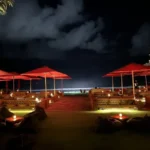Bali Diving is an adventures experience, that will capture your interest and imagination. The countless array of beautiful fish and exotic plant life will amaze you, as you explore the last great frontier on earth. The challenge of diving and discovering the world under the sea is a fun and healthy sport. You will be scintillated and exhilarated by the wonders of the world beneath the waters.
Bali have spectacular marine life environments, boasting more than 2500 fish species and an immense number of coral and invertebrates.
Scientist continue to discover new species here, some of which are believed to be endemic. The island’ s rich bio-diversity is one of our many blessings. This small area may well represent the most biologically diverse undersea environment on earth. Bali is an absolute heaven for serious underwater photographers and minute sea-creature lovers who will find macro subjects like Shrimps, rare nudibranchs and mandarin fish. While many of Bali’ s abundant species are small, divers may also interact with large marine creatures. On the larger end of the scale, rarely seen are migrating Whales, Manta, Dolphins, the occasional Whale shark, Hammerhead sharks, Tiger and Leopard sharks, which cruise through Bali’ s ocean.
Waves on Bali were already being surfed by both foreign and local surfer as early as the late 1930s. So it’s not true, according to contemporary surfing magazine lore, the island of Bali was first discovered as a viable surfing destination by a group of traveling Australian surfers. Even though, in 1967, the surf explorers from Australia first begin arriving on the island of Bali bearing serious wave riding equipment…
1. Diving in Menjangan, Bali
Menjangan belongs to the West Bali National Park. The National Park has a size of 19000 hectares. It includes rainforest, Savanna and pristine coral reefs. Located on the northwest from Nusa Dua. Driving about three hours through Balinese country side and take 30 minutes from Labuhan Lalang Harbor by motor boat to the island.
2. Diving in Lembongan & Nusa Penida, Bali
Take about 30 minutes by boat from Padang Bay Harbor or one hour by boat from Nusa Dua to Nusa Lembongan or the sister small island Nusa Penida. have a world Famous dive Sites such as , SD point, Sental, Buyuk, Toyapakeh, Gamat bay, Ceningan Wall, Crystal bay, Manta Point, Lembongan point, Blue Corner, and many other renowned for their beauty
This place consists of Nusa Penida, Nusa Lembongan, and Nusa Ceningan which is the island of dry limestone, 20 km off the southeast coast of Bali. You can reach this place by using the speedboat trip time approximately 45 minutes from Sanur. Here, there is the healthiest coral in Bali, which became home to many species of fish. Very suitable for drift diving, and the best place to see Manta and Mola-mola season when the sea level overlooking the dramatic.
North coast is a place diselami most in Nusa Penida for the rich coral walls and healthy to shelter dozens of amazing fish. Besides coral, the Toyapakeh there bommies soaring and slope which are rich in marine plants. In addition, there was Crystal Bay (better known as Penida Bay), Gamat bay, Toyapakeh Wall, Manta Point, and the Batu Abah (divesite farthest in Nusa Penida).
To Ceningan Wall, this place is quite difficult to achieve. There are a bunch of Tuna and Trevally, Moray Eel, and Barracuda, even Leopard Shark. Meanwhile, Mangrove Point or Long known for its lobster. And, Blue Corner or Frond Point site is one of the most ‘deadly’ in Bali is famous for its wild currents.
3. Diving in Padang, Bali
The dive sites of Padang Bai offer a great variety. From the novice diver to the diving professional, there is something for every experience level. Padang Bai is a haven for UW photography with a myriad of species that will pose for a portrait (Morray Eels, Leafy Scorpionfish, Anglerfish, Stonefish, Indian Walkman.
4. Diving in Tepekong & Amed, Bali
The dive site features a pinnacle, which erects from a depth of 25 m forming a scenic swim through in 20 m. At both drop offs your 5m safety stop will be highly entertaining. Both dives are drift dives with a mild current, with outrigger boats following the divers. Both are very comfortable dives.
5. Diving in Tulamben
Quiet village in northeastern Bali can be achieved in two and a half-hour overland journey from Sanur. Almost all of its dive sites is the beach entry, although there are some that require a traditional boat for a few minutes away. The main attractions in this area is the carcass of the USS Liberty. This place must be visited while diving in Bali, especially for underwater photographers because this place is famous for many kinds of sea creatures.
Other sites, including the Drop-Off Coral Gardens offers a shallow and deep coral reefs. Tulamben is the best place to do night dive in Bali. And, because of its location on the east coast, you’ll get the sunrise extraordinary. Usually, the water is very calm, except during the full moon, in particular after the New Year or the end of the summer. Temperature range 27-28 ° C. Suitable for all levels of divers.
6. Diving in Pemuteran
This place is a three-hour drive from Sanur, plus 20 minutes from where the ships heading for Pulau Menjangan. Here, you will find rock walls and a variety of macro creatures. At this location, there are 3 divesite. First, Close Encounters which offers a variety of hard and soft corals. Schooling Snapper, Trevally, Batfish, Pipefish, nudists, Frogfish, and the Crocodile are found here. Then, Napoleon Reef corals began to recover with a ‘healthy’ and the various types of reef fish that had broken in 1997 and is the most convenient place to do night dive at Pemuteran. Finally, to meet Mimic Octopus, you can Macro Site.
7. Diving in Seraya
To reach this place, you may take approximately two hours from Sanur, and few minutes before Tulamben. Dive site was discovered 5 years ago. This dive site has taken over the Secret Bay as a macro dive site number one in Bali.
Here, you can find a Harlequin Shrimps, Frog fish various colors, Pipe fish, Decorator Crabs, Spider Crabs, Boxer Crabs, Hermit Crabs, Shrimps Comensal, various types of Nudibranchs, Squat Lobsters, Lion fish, Morays adults, Seahorses (Thorny and Common), cuttlefish , and the Dragonet.
There are also a number of reefs that are ‘healthy’ in the area rarely dived. This reef is best visited by boat because the water flow is strong enough at the turn of the tide. Although dive site including beach entry, when the full moon, waves large enough to enter the water from the beach quite difficult.

Source : Bali Tourism Board







